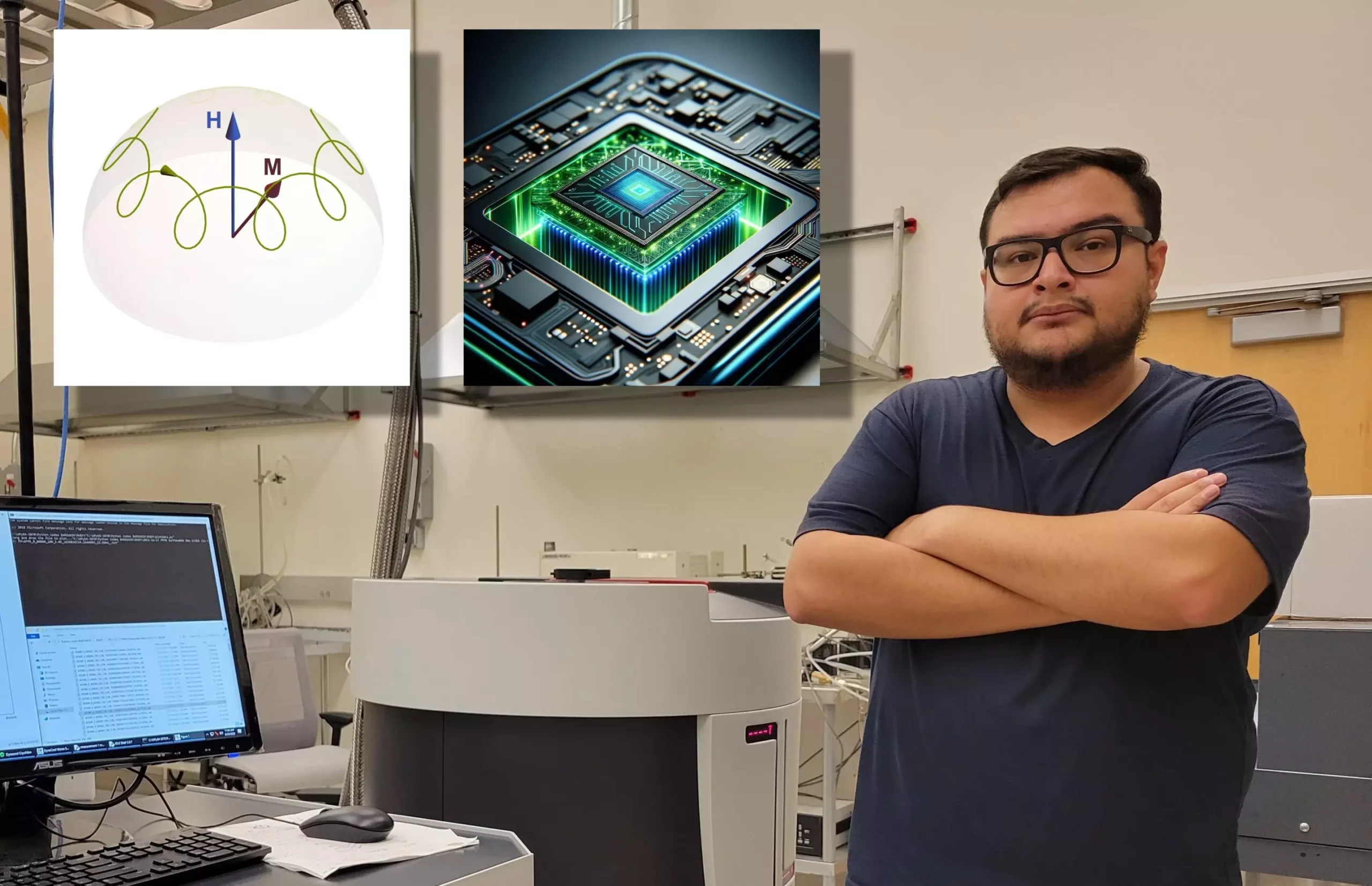In a groundbreaking study led by researchers at the University of California, Riverside, a significant advancement has been made in enabling and harnessing ultra-fast spin behavior in ferromagnets. Published in Physical Review Letters and recognized as an editors’ suggestion, this research opens the door to achieving terahertz frequencies using conventional ferromagnets, potentially revolutionizing communication and computation technologies.
Ferromagnets are materials in which electron spins align in the same direction, creating what are known as spin waves. These spin waves are vital components in emerging computer technologies, as they play a crucial role in information processing and signal transmission. The recent research has shed light on the intricate interactions between spins, electrons, and the crystal lattice of ferromagnets, leading to the discovery of a phenomenon called nutation.
Nutation is a type of spin oscillation that occurs at ultra-high frequencies, making it highly sought after for next-generation communication and computation technologies. The experimental confirmation of nutational oscillations has generated significant excitement in the magnetism research community, as it presents new possibilities for manipulating spins and driving self-sustained oscillations.
The research team found that injecting a spin current with the “wrong” sign can excite nutational auto-oscillations in ferromagnets. These self-sustained oscillations hold immense promise for future technological innovations, as they could lead to devices operating at frequencies a thousand times faster than current technologies.
Spin inertia introduces a second time-derivative in the equation of motion, leading to some counterintuitive phenomena. By harmonizing spin-current-driven dynamics and spin inertia, the researchers have uncovered new possibilities for advancing communication and computation technologies. Additionally, the discovery of an isomorphism between the spin dynamics in ferromagnets and ferrimagnets offers the potential to exploit synergies between these fields and accelerate technological innovation.
In ferrimagnets, two antiparallel spin lattices with an unequal amount of spin have recently garnered increased interest as candidates for ultrafast applications. While there are still many technological challenges to overcome, the researchers believe that the advancements in spin currents and materials engineering for ferromagnets in recent decades have positioned them as excellent candidates for ultra-high frequency applications.
The research conducted by the team at the University of California, Riverside, represents a significant step forward in the field of magnetism and spin behavior. By unlocking the potential of nutational auto-oscillations and leveraging spin inertia, the researchers have laid the groundwork for the development of next-generation communication and computation technologies that could operate at unprecedented speeds. The future of ultra-high frequency applications looks brighter than ever, thanks to this groundbreaking research.


Leave a Reply